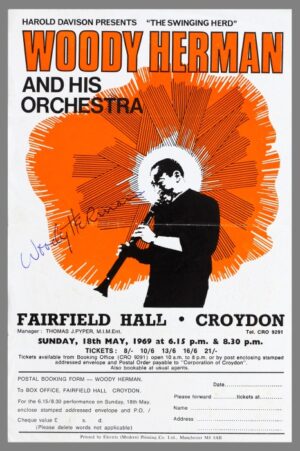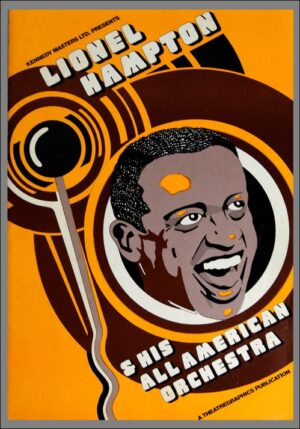Description
Florence: Jazz di ieri e di oggi numero 1+2 — January/February 1960
Original January/February 1960 issue of Italian jazz monthly Jazz di ieri e di oggi with American ragtime and jazz pianist, bandleader, and composer Jelly Roll Morton (1890—1941) on the front cover. In this issue: Jazz in Italia: Corriere Italiano (p. 5); Appunti su una crisi by Carlo Peroni (p. 6); La Rheno Dixieland Band (pp. 7-8); Doctor Jazz: Vita di J. R. Morton by Edoardo Suriani (pp. 9-18); Discografia di J. R. Morton (pp. 19-23); Visita a Pete Jolly by William Donati (pp. 24-28); Album di Charlie Parker (pp. 29-44); Il mare capovolto by Livio Cerri (pp. 45-48); Microsolco al Microscopio by Francis Thorne (pp. 49-53); L’altra sponda by Franco Fayenz (pp. 54-59); Microsolco U.S.A. (p. 60); Segnaliamo questi dischi by Alfredo Luciano Catalani (pp. 61-64); Number 12 Train (pp. 65-67); Jazz Americana (pp. 68-69); Incontro con Donald Lambert by Dan Morgenstern (pp. 70-71); Notizie da New York by Dan Morgenstern (pp. 72-73). Jazz di ieri e di oggi (trans.: “Jazz of yesterday and today”) was the Florentine answer to Italian’s premiere jazz magazine at the time, Musica Jazz, published in Milan since 1955. Founded and published by Alfredo Luciano Catalani, the first member of the Hot Club of Florence, the first issue, a double issue, was issued in February 1959. Editor-in-chief was the passionate journalist and photographer Francesco Cecco Maino, perhaps best known for his early connection to Chet Baker. International correspondents for the publication included Nestor Ortiz Oderigo (Argentina); Frank Tenot (France); Joachim-Ernst Berendt (Germany); and William Donati (Hollywood); Felix Manskleid and Dan Morgenstern (New York); Anthony Palmisano (New Orleans). Regretfully, the magazine was a shortlived affair. It ceased publication by the end of 1960 with a special photo edition. Jazz di ieri e di oggi was a large size magazine and arguably the most beautifully executed jazz publication ever published. Graphically, it was a work of art, featuring exquisite layout. It had a special charm and was often delicately printed on different colors of paper. The printing process must have been extremely expensive, and may explain the short lived history of the publication.
23.4 x 27.7 cm, 74 pp. Trimmed cardboard wrapper, staple bound. All text in Italian. Very light wear to spine and extremities, else in excellent condition, tightly bound and clean. Feel free to email us with any questions you may have concerning this item. Additional images of the magazine available on request.







Reviews
There are no reviews yet.